
Austrian postcard by Iris Verlag, no. 572. Richard Talmadge in Let's Go (William K. Howard, 1923).
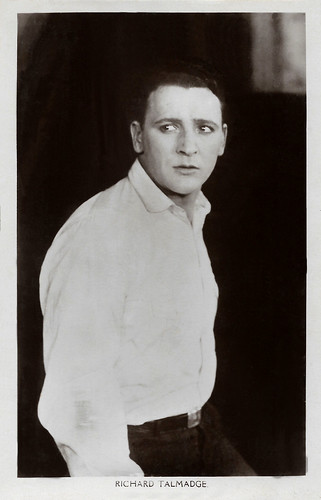
British postcard in the Picturegoer Series, London, no. 140.
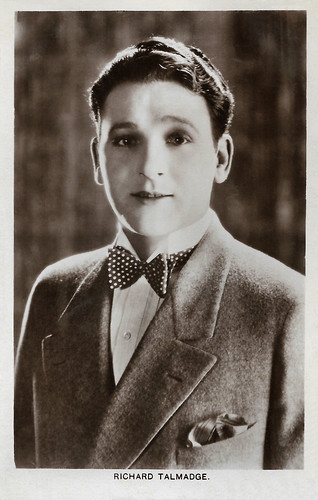
British postcard in the Picturegoer Series, London, no. 140b.

Spanish collectors card by Chocolates Amatller, Barcelona, in the 'Artistas de cine' series, no. 17: Richard Talmadge. Image: Martinez Surroca.
Stuntman for Tom Mix and Douglas Fairbanks
Richard Talmadge was born Sylvester Alphonse Metz, Sylvester Metzetti, Ricardo Metzetti, or Sylvester Ricardo Metzett (the sources differ) in 1892 in Munich, Germany (according to IMDb in Camburg, Saxe-Meiningen (now Thuringia), Germany).
He first came to the USA as a boy member of the famed acrobats, the Metzetti Troupe (also written as Mazetti), that had been engaged by Barnum & Bailey Circus. His brothers, Otto and Victor Metzetti, both had success as stunt performers and were members of the vaudeville troupe the Flying Metzettis (or the Five Metzettis) who were the first to perform the quadruple back somersault in 1917, at Barnum and Bailey's, with Richard as voltigeur.
He arrived in Hollywood in 1910 where he began his career as a stuntman for Slim Summerville, Tom Mix, and Douglas Fairbanks (in such films as The Mark of Zorro, The Three Musketeers, and Robin Hood) before becoming an actor himself. He continued his stunt work after his start as an actor.
Talmadge had his first lead in The Unknown (Grover Jones, 1921) for Phil Goldstone Productions, followed by several more leads in Goldstone films, such as the sensational Thru the Flames (Grover Jones, 1923).
In 1923 Talmadge launched his own company Richard Talmadge productions, starting with Let's Go (William K. Howard, 1923). Other titles were e.g. American Manners (James W. Horne, 1924), Laughing at Danger (James W. Horne, 1924), Tearing Through (Arthur Rosson, 1925), and The Fighting Demon (Arthur Rosson, 1925).
Talmadge's fast-pacing action and adventure films were popular over the world, in particular in the Soviet Union. IMDb: "Talmadge had a large presence in the Soviet market as movies made by independent American producers like Talmadge could be more easily, and cheaply imported. Talmadge's films played only in marginal theaters in the United States (due to the tight control of major theater chains by the large producers), and they enjoyed disproportionate success in the Soviet Union, especially since they were also quite shallow standard fare guaranteed to have no political message. As a result, some films that were barely noticed in their home country became hits in the USSR, their success often at odds with their cinematic value."
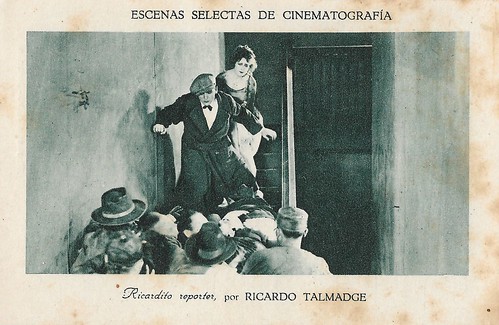
Spanish collector's card in the Escenas selectas de cinematografia series. Photo: Richard Talmadge in The Cub Reporter (John Francis Dillon, 1922), presented in Spain as Ricardo reporter.
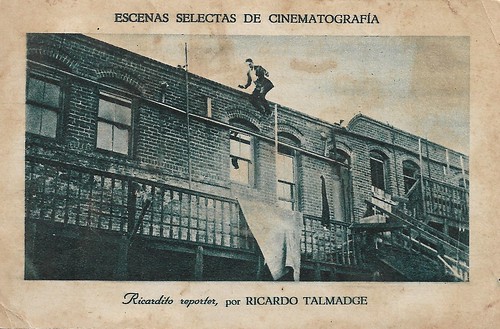
Spanish collector's card in the Escenas selectas de cinematografia series. Photo: Richard Talmadge in The Cub Reporter (John Francis Dillon, 1922), presented in Spain as Ricardo reporter.
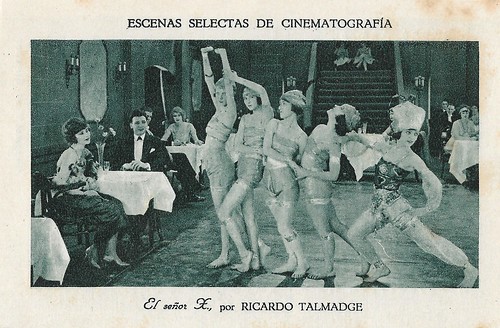
Spanish collector's card in the Escenas selectas de cinematografia series. Photo: El senor X is probably The Mysterious Stranger (Jack Nelson, 1925).
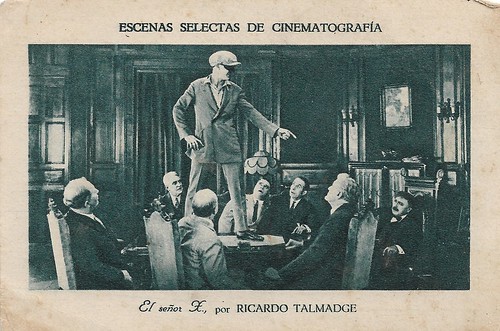
Spanish collector's card in the Escenas selectas de cinematografia series. Photo: El senor X is probably The Mysterious Stranger (Jack Nelson, 1925).
Working behind the cameras
Richard Talmadge was the lead in the Western The Cavalier (Irving Willat, 1928), a film released by Tiffany Pictures with only a music and sound effects soundtrack. He continued with such films as The Poor Millionaire (George Melford, 1930), Dancing Dynamite (Noel M. Smith, 1931), Speed Madness (George Crone, 1932), and the serial Pirate Treasure (Ray Taylor, 1934).
Talmadge never got rid of his German accent, so with the advent of the talkies, he started working behind the cameras as assistant director, stunt coordinator (often uncredited) and, from 1945, as director, thanks to his friend Henry Hathaway.
Talmadge was e.g. assistant-director to Hathaway's North to Alaska (Henry Hathaway, 1960). His later work included stints as the stunt coordinator of How the West Was Won (John Ford, a.o., 1962) and director of the finale of Casino Royale (Ken Hughes, a.o., 1967).
Talmadge was married twice, from 1917 on to Madeleine Francis Allen, and from 1961 till his death in 1981 to Suzanne Avery. He was the stepfather of American polo pioneer and Polo's Grande Dame Sue Sally Hale.
Richard Talmadge died of cancer at the age of 88, in 1981, in Carmel, California. He is interred at Inglewood Park Cemetery, where his grave is marked with the name "Richard Metzetti Talmadge".
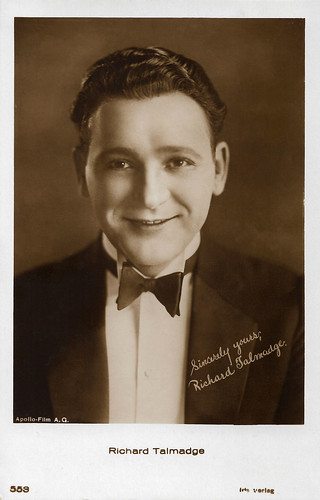
Austrian postcard by Iris Verlag, no. 553. Photo: Apollo Film A.G.
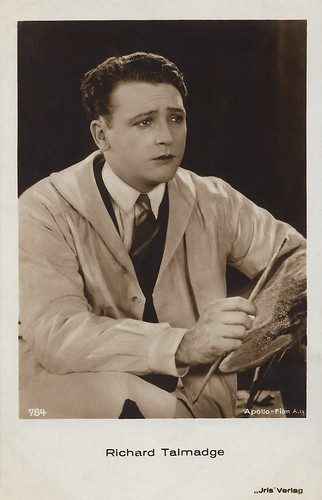
Austrian postcard by Iris Verlag, no. 784. Photo: Apollo-Film A.G.
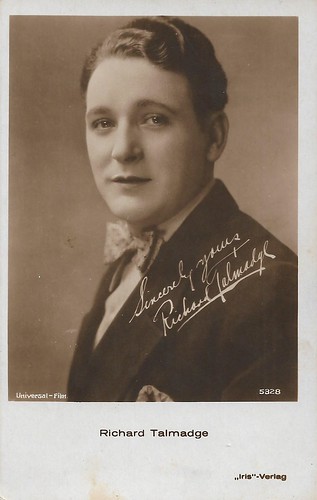
Austrian postcard by Iris Verlag, no. 5328. Photo: Universal-Film.
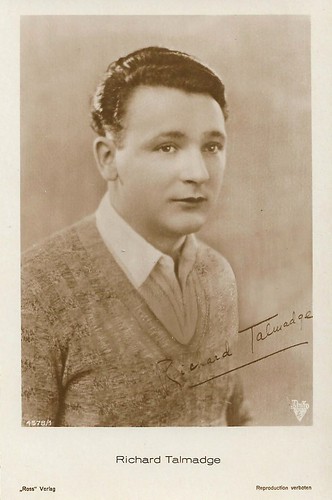
German postcard by Ross Verlag, no. 4578/1, 1929-1930. Photo: Radio Pictures.
Sources: Wikipedia (English and French), and IMDb. The Belgian archive Cinematek possesses many Talmadge films.
No comments:
Post a Comment